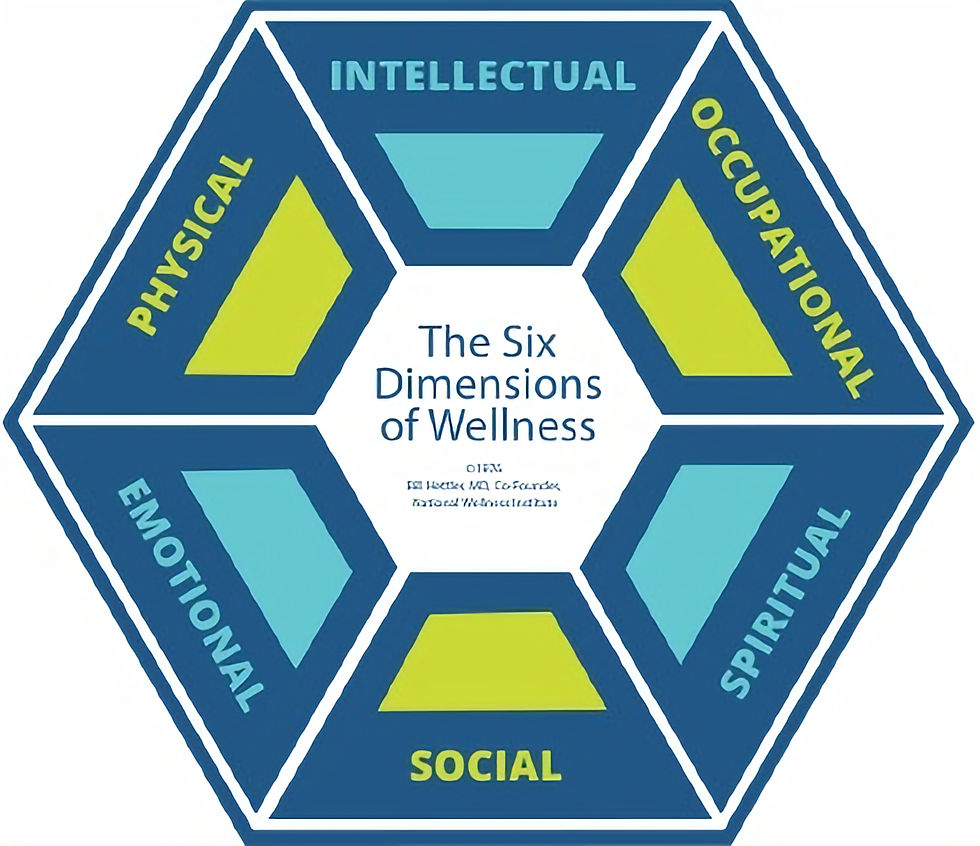
Holistic Approaches to Health and Wellness
WELLNESS FRAMEWORK
Welcome to Our Re:THINK WELLNESS Initiative!
Start Your Journey with MIRA SOWAKA.

NWI's Six Dimensions of Wellness model is the international gold standard for
improving personal wellness and is a trusted resource for professional wellness leaders, Certified Wellness Practitioners, Clinicians, Coaches, Educators and more...., to elevate the well-being of the individuals they serve. MIRA SOWAKA applies NWI's Six Dimensions of Wellness Framework to deliver and
manage wellness services to get desired outcomes.
Applying the Six Dimensions!
Applying the Six Dimensions of Wellness model brings forth awareness of the
interconnectedness of each dimension and how they contribute to living a healthy life.
This holistic model explains:
As a pathway to the WHOLE PERSON, wellness is now being activated in a variety of associated fields, including health promotion, holistic health, clinical care, and multiple “helping professions,” including coaching, counselling, consulting, training, and instruction.

When assessing the Six Dimensions of Wellness,
keep in mind the potential impacts of
key environmental factors where you
LIVE, WORK, LEARN, PLAY and REFLECT.
#1: Emotional Wellness
#2: Physical Wellness
#3: Intellectual Wellness
#4: Occupational Wellness
#5: Spiritual Wellness
#6: Social Wellness

Emotional Wellness Dimension
The awareness, acceptance of one's feelings and the capacity
to manage behaviours related to one's emotional state.
Emotional Wellness follows these core tenets:
* It is better to be aware of and accept our feelings
than to deny them.
* It is better to be optimistic in our approach to life
than pessimistic.
* Doing a regular Emotional Wellness Self-

Physical Wellness Dimension
The consistent prioritization of physical self-care and the
engagement in a variety of health-enriching behaviours.
Physical Wellness follows these core tenets:
The consistent prioritization of physical self-care
and the engagement in a variety of health-
enriching behaviours.
* It is better to feel strong, be physically fit, and be
well-rested than out of shape and tired.
* Doing a regular Physical Wellness Self-
Assessment

Intellectual Wellness Dimension
The creative, stimulating activities that lead to learning,
personal growth, and the sharing of one's unique gifts
with others.
Intellectual Wellness follows these core tenets:
* It is better to stretch and challenge one's mind with intellectual and creative pursuits than to become self-satisfied and unproductive.
* It is better to identify potential problems and choose appropriate course of action based on available information than to wait, worry, and
contend with major concerns later.
* Doing a regular Intellectual Wellness Self-Assessment

Occupational Wellness Dimension
The personal satisfaction and enrichment one receives in
life through their employment, academic, or volunteer
work.
Occupational Wellness follows these core tenets:
* It is better to choose work that is consistent with one's personal values, interests, and beliefs than to select work that is unpleasant or unrewarding.
* It is better to develop functional, transferable skills through structured involvement opportunities than to remain inactive and
uninvolved.
* Doing a regular Occupational Wellness Self-Assessment

Spiritual Wellness Dimension
The development of an appreciation for the depth and expanse of life and natural forces that exist in the universe.
Spiritual Wellness follows these core tenets:
* It is better to ponder the meaning of life for ourselves and to be open to the beliefs of others than to close our minds and become intolerant.
* It is better to live each day in a way that is
consistent with one's personal values and beliefs than to do otherwise, compromise our integrity, and feel untrue to ourselves.
* Doing a regular Spiritual Wellness Self-Assessment

Social Wellness Dimension
The contribution to one's environment and community with an emphasis on the interdependence between others and nature.
Individuals are encouraged to make a positive impact by connecting with others while activating wellness where they
LIVE, WORK, LEARN, PLAY and REFLECT.
These are the five pillars of one's environment as reflected in NWI's Social Activation of Wellness model:
Social Wellness follows these core tenets:
* It is better to contribute to the common welfare than to think only of ourselves.
* It is better to live in harmony with others and our environment than to live in conflict with them.
* Doing a regular Social Wellness Self-Assessment
